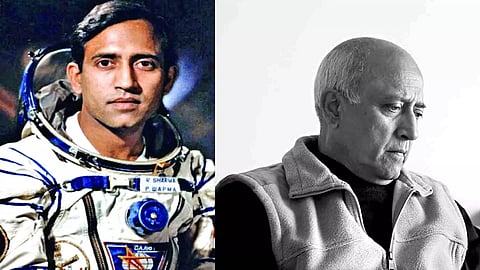

CHENNAI: Miles away from the headquarters of the Indian Space Research Organisation, where dozens of scientists and other experts are monitoring the progress of the Chandrayaan-3 mission, sits a man who has his sights fixed on an even more ambitious space programme. For retired Wing Commander Rakesh Sharma, one of his kind being the only Indian to go to space, all these progresses that the country is making are smaller steps towards the larger goal of joining the high table of spacefaring countries.
India is currently working on its crewed orbit spacecraft, Gaganyaan, which is intended to launch the Indian Human Spaceflight Programme. The mission will have four IAF test pilots becoming astronauts, an arduous journey of hours of training and hard work, to which the retired Air Force veteran is lending a guiding hand with his experience and knowledge.
“Now that we’ve created the ecosystem that will cater to needs of our country, it is time we stepped up our activity and focused on pure science if we wish to be on the high table with other developed nations. Then, we will also be in a position to influence future international space policies,” Sharma told DT Next from his home in Coonoor.
Knowing the complexities and perils involved in a mission that is as ambitious as this, Sharma is unconcerned about the team meeting the deadline of 2025.
“This is no race! We are doing this for the very first time, and human lives are involved. It is best to make haste slowly instead of putting ourselves under the pressure of time. Humans have already walked on the Moon, and are now getting ready to return there. In this game, the safety of the crew has to be ensured.”
Understandably proud, ‘brilliant’ is how he describes India’s achievement in space technology and exploration.
“We have done it alone, because nobody shares cutting-edge technologies, as those who possess them derive strategic advantage from them. We have done all this without being a developed nation. We ran a frugal space programme but got an impressive return on our investment. Our space programme’s focus has been to ensure that our efforts in space result in socio-economic benefits to the country, and its people. Think in terms of our economy, telecommunication, disaster warning, telemedicine, tele-education and a lot more,” Sharma elaborated.
When asked about the Artemis Accords, a US-led international partnership on planetary exploration and research that India joined recently, Sharma opined that India stood to gain a huge competitive advantage by partnering with the US on this programme.
“Going forward, space exploration is about to enter a phase that demands huge financial resources. Competition does not recommend itself any more, cooperation does. The earlier space race and the moon landings were part of a race between the US and the Soviet Union triggered by ideology. There are no such compulsions between nations today,” he said.
Since Artemis promises a sustainable and transparent exploration of space, he stated that India as a signatory had a ‘voice’, “in case we notice departures in action from space treaties currently in force”.
This understanding of cooperation is, perhaps, more rooted in the larger idea of humanity as a whole, a perspective he had gained by spending 7 days, 20 hours and 40 minutes while the Soviet space station Salyut 7 orbited the Earth.
Though that historic experience was more than 39 years ago, such was the beauty of the Sun rising and setting that Sharma said they would always stay fresh in his mind. “It was also impactful to realise the vastness of the scale on which things are. The unending universe for as far as the eye can see, the fragility of our home planet, and the environmental degradation happening due to unsustainable development,” he said.
This view from afar is similar to what legendary astrophysicist and author Carl Sagan meant when he described Earth as ‘a pale blue dot’. While Sagan was referring to an image of our planet taken by NASA’s Voyager 1 from a distance of 6 billion km, Sharma says he has experienced the absence and irrelevance of man-made boundaries and divisions.
Calling Sagan a visionary, Sharma said, “All that he has said about planet Earth resonates deeply within me. It needs to be heard very carefully and acted upon by humanity for its wellbeing.”
Despite remaining fiercely protective of his privacy as he is ensconced in his cosy home atop the Blue Mountain, Sharma would still love to go and explore space one more time. “But only to peer out of the window, take in the view, and all the natural beauty. As a crew member, one is busy all the time,” he smiled.